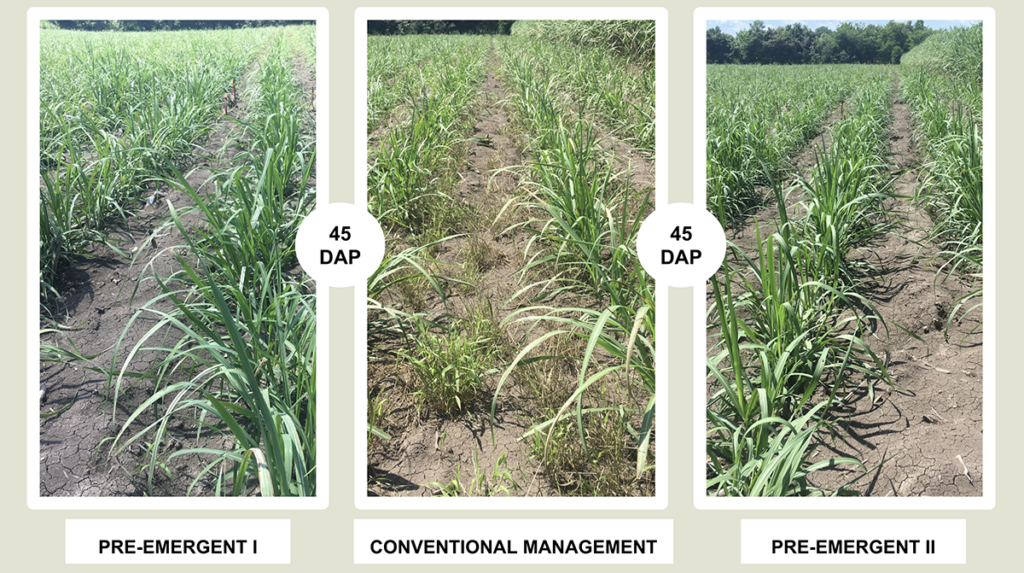MAS-CAÑA supports smallholders on their path to sustainability
Solidaridad’s award winning MAS-CAÑA programme works to achieve a positive impact on sugarcane smallholders through the implementation of Good Agricultural Practices (GAP).

The programme includes the following elements that support cultural change among smallholder farmers:
- Courses: Smallholders receive technical knowledge to learn the importance of scheduling agricultural tasks. They also receive training on occupational safety, environmental practices, and improving their yields.
- Technical Assistance: Solidaridad looks to improve opportunities for smallholders and provides timely and appropriate assistance. .
- Demonstration Plots: Our technicians show smallholders the tangible benefits of applying the best agricultural practices, while demonstrating improved results based upon theoretical models.
- Learning Exchanges: We schedule training days in the demonstration plots where farmers present the preliminary results of the new and better practices to other producers in the community.

MAS-CAÑA’s work has a direct impact on the producers of sugarcane. The programme is building on its success one smallholder at a time, and Juan Noriga is representative of the many lives Solidaridad has helped through education, technical expertise, and community outreach.

CASE STUDY: JUAN NORIEGA’S DEMONSTRATION PLOT
The Noriega Flores family lives in Veracruz, Mexico. Juan is one of the more than one thousand smallholders who received technical support during the programme’s first year in 2022. Juan’s plot is a success story that demonstrates the efficacy of applying MAS-CAÑA’s principle elements to improve productivity.

At first, MAS-CAÑA staff worked with Juan to determine that weed control on the farm could be improved. To show the benefits of GAP, one hectare of Juan’s sugarcane field was established as a demonstration plot with an appropriate weed control technique.
Traditionally, smallholders use post-emergent herbicides to control or kill weeds after they germinate. However, this is neither efficient nor sustainable in actual practice. However, the use of pre-emergent herbicides, which are used to control weed seeds before they germinate in the soil, has many advantages; these include the fact that they require fewer applications than in a more traditional farming practice.
Juan had never applied pre-emergent herbicides and his weed management consisted only of post-emergent herbicides. Consequently, there was an over-abundance of weed seeds in his plot.
Solidaridad’s technician proposed that Juan utilize integrated weed management. Once the area of the demonstration plot was determined, a protocol was established to evaluate a number of variables, including the efficacy of the alternative weed control, the cost per day of this new control, and the amount in each treatment.

Before applying pre-emergent herbicides, the Solidaridad technician helped to calibrate the backpack sprayer and added a fan nozzle. He also explained to Juan the importance of using this new type of nozzle instead of the hollow cone nozzle, commonly used by smallholders, to avoid herbicide leaks.

Before mixing the pre-emergent herbicide, the technician checked the local water quality to ensure the proper mixture of chemicals within the backpack sprayer.

Juan was provided with personal protective equipment to use during the herbicide application, with the technician emphasizing the importance of work safety and health. Juan commented that he had never used this type of protective equipment before.

Twenty days after planting a crop on the demonstration plot, the pre-emergent herbicide treatments on the demonstration plot were 100 percent effective.
After forty-five days Juan saw the need for a second post-emergent herbicide application on his conventionally managed plots due to the strong seed banks. However, in the demonstration plot, the pre-emergent application treatments continued with a 100 percent weed control success rate.

A successful demonstration plot
To ensure the local smallholders could see and validate the results of the pre-emergent application, we invited local producers to a field day to present the results of this novel weed control strategy. During the field day, Juan and his son explained to the attendees the methodology, the calibration method, the nozzle type, the inputs and mixing order, and how personal protective equipment was an essential element to protect their personal health.
Juan’s results were clear. His demonstration plot with the pre-emergent herbicide was free of weeds, and the planted crop showed better color and vigor. On the other hand, weeds were present in the conventionally managed hectares. Additionally, the conventionally grown crop contained some phytotoxicity while also showing less development due to the competition from the still growing weeds.
In summary, the pre-emergent herbicides only required one application which provided more than 110 days of control. While in the conventionally managed hectares, the first post-emergent herbicide only provided 25 days of control.

Challenge accepted
The work carried out by the MAS-CAÑA team together with members of the local community of smallholders has reduced the resistance to innovative agricultural techniques. The demonstrated benefits of the programme provides convincing evidence that newer farming ideas and good agricultural practices have a significant impact on agricultural productivity. This has allowed smallholders to increase their income which they often invest in new technology and new tools for crop management. Finally, this increased profitability has improved the livelihoods of smallholders and their families, and has brought real change and real benefits to local communities.

